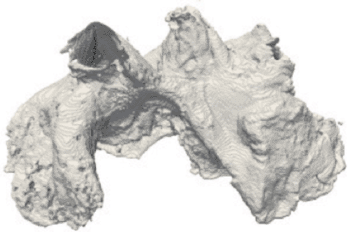New Virtual Heart Reveals Important Information on Common Heart Defect
By LabMedica International staff writers
Posted on 06 Feb 2013
With advanced computational technology and information, researchers have built a highly accurate 3D model of a mammalian heart, enabling a study that revealed new information about the mechanisms underlying one of the world’s most common heart conditions.Posted on 06 Feb 2013
In a collaborative effort led by scientists at the University of Manchester (Manchester, UK), the model was developed by taking a series of very thin slices of a sheep’s heart, imaging them in 2D, then computationally rendering them into a 3D virtual model. The anatomically realistic reconstruction includes details of the complex fiber structure of the tissue, and the segmentation of the upper chambers of the heart into known distinctive regions. Single-cell models that take into account information about the electrical activity in different atrial regions were then incorporated into the model. The virtual heart was then used to investigate the sudden irregular heart-rate condition “atrial fibrillation” (AF), which affects approximately 1.5% of the population worldwide, and is known to increase the risk and severity of stroke, yet very little is known about its cause(s).

Image: Image from the advanced new 3D virtual heart model. (Photo courtesy of University of Manchester).
The research team focused on the pulmonary vein, a common area that triggers AF. They simulated erratic electrical waves passing through the vein and the surrounding atrial tissue, then studied the impact this had on the rest of the heart. Electrical heterogeneity (regional differences in the electrical activity across the heart tissue) was found to be a key to initiation of AF. The largest electrical difference was between the pulmonary vein and the left atrium, which may help explain why the pulmonary vein region is a common source of AF. The scientists also identified that fiber structure plays an important role in the development of AF. There were directional variations in the conduction of electrical waves along and across the fibers, variations known as anisotropy. The fiber structure in the left atrium is much more organized compared with the complex structures of the pulmonary vein region. The sudden variation in conduction at the junction between the left atrium and the pulmonary vein regions appeared to contribute to the development of AF.
“This study has for the first time identified the individual role of electrical heterogeneity and fiber structure in the initiation and development of AF. It has not previously been possible to study the contribution of the two separately, but using our computational model we’ve been able to clearly see that both electrical heterogeneity and fiber structure need to be taken into consideration when treatment strategies for AF are being devised,” explained lead investigator Prof. Henggui Zhang: “We’re really excited about the potential that our virtual heart opens up for research into this incredibly complex organ. By bringing together physics and biology, we hope to unlock some of the unanswered questions about atrial fibrillation, a condition, which is only going to become more common as people live longer. ”
The next step planned for the team is to find a way to target the electrical conduction in specific regions of the heart to better protect against AF.
The study was published online January 16, 2013, in the Royal Society’s independent journal Interface Focus.
Related Links:
University of Manchester














